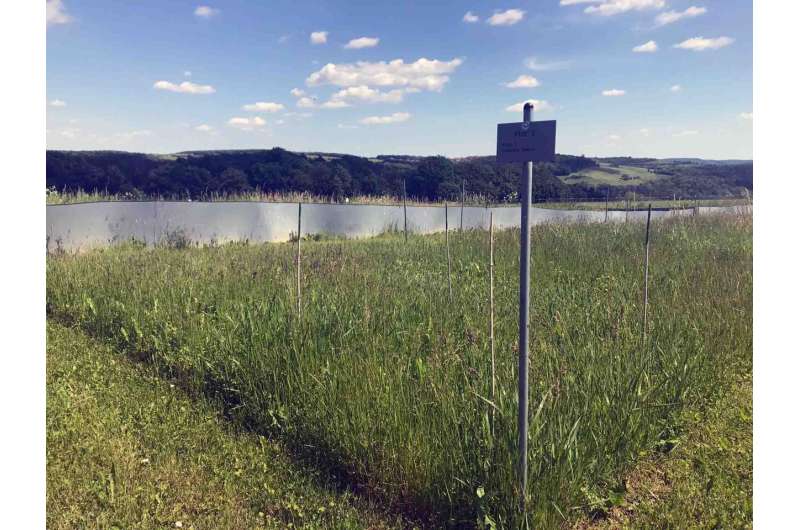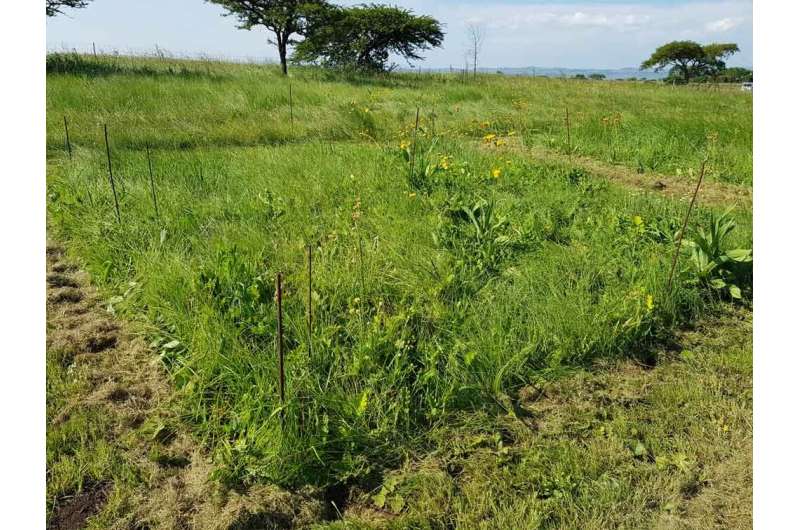More yield, fewer species: How human nutrient inputs alter grasslands

One of the reasons for the global threat to biodiversity is that we humans introduce more nutrients into our environment than would naturally be present there, for example, when fertilizing agricultural land. In addition, precipitation re-distributes excess nutrients to other areas, and nutrients can also enter our soils through air pollution.
Natural grasslands are a habitat for many different plant species including grasses, herbs, wildflowers and orchids, many of which can be threatened by human activities and impacts. Plants need three things to grow: carbon dioxide (CO2) from the air, water and nutrients from the soil. The latter are usually scarce in semi-natural European meadows. Although this limits the growth of individual plants, it favors the possibility of many different species growing side by side. Excessive amounts of nutrients, however, create the image that is ubiquitous in our landscape today: lush green meadows but without the colorful flowers of former times.
It has long been known that excess nutrients reduce biodiversity, but until now the process behind it has been unclear. Researchers from iDiv, UFZ and MLU have now investigated the causes of this phenomenon in collaboration with a large international team. To do this, they recorded the plant species community on fertilized and unfertilized grassland in experiments at 59 sites on six continents over a period of 13 years.
"The composition of plant species in grasslands always varies slightly; that is quite normal," says Dr. Emma Ladouceur, lead author of the study and a scientist at iDiv and UFZ. "For some species, the conditions in one year are not optimal, and they can only produce a few seeds, or no new plants emerge from them. On the other hand, other species whose seeds were already in the soil or were carried in by wind or animals can germinate. Through these processes, different species occupy new spaces in natural areas. The higher the species diversity, the higher the probability that species adapted to the living conditions are present and are providing ecosystem services humans depend on."
With high nutrient inputs, more species get lost and less new species arrive
As expected, this experiment also consistently showed a decline in species on the nutrient-enriched plots through time. In order to be able to attribute the observations to changes in plant species, the scientists divided the plant communities into three categories: Species that were permanently present at a site over the entire study period, species that disappeared, and those that newly arrived.

The analyses showed that on the one hand, more species got lost in the fertilized areas than in the unfertilized grasslands during the study period; on the other hand, fewer new species arrived during this time. The species composition also changed in the unfertilized areas. However, losses and gains were balanced out here—the number of species remained constant in total.
In addition, the researchers recorded the aboveground biomass produced. As expected, the biomass of the harvested plants was higher on the fertilized trial plots than on the unfertilized ones, observable in the first year of experiments. About 60% of this increase was due to plant species that were permanently present at a site. The remaining 40% of the biomass was produced by newly added species, although fewer new species were added each year than on the unfertilized experimental plots.
Study provides valuable information for practical nature conservation
"Our results show that when unnaturally large amounts of nutrients are present, a few species benefit particularly," says Emma Ladouceur. "Many other not-so-competitive species fall by the wayside—we lose them, and new species have a hard time establishing and taking hold."
"Our study makes a significant contribution to better understanding the effects of unnatural nutrient inputs on our biodiversity," says senior author Prof Stanley Harpole, head of the Physiological Diversity Research Group at UFZ, iDiv and MLU. With their study now published in Ecology Letters, the researchers are also providing valuable information for practical nature conservation. "For nature conservation areas next to an agricultural area, it is important to know how the run-off of nutrients affects the semi-natural ecosystem so that targeted measures can then be taken to protect it," says Harpole.
More information: Emma Ladouceur et al, Linking changes in species composition and biomass in a globally distributed grassland experiment, Ecology Letters (2022). DOI: 10.1111/ele.14126
Journal information: Ecology Letters
Provided by German Centre for Integrative Biodiversity Research





















